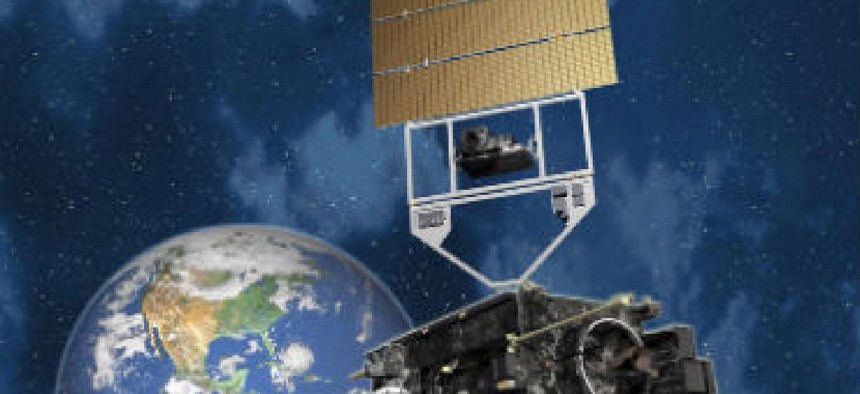NOAA geostationary satellite program gets favorable review

While problems with other programs could lead to lengthy gaps in polar satellite coverage, agency’s GOES-R project is on track for 2015 launches.

While problems with other programs could lead to lengthy gaps in polar satellite coverage, the National Oceanic and Atmospheric Administration's GOES-R project is on track for 2015 launches.
The National Oceanic and Atmospheric Administration's $10.7 billion program to replace its existing fleet of geostationary satellites received a favorable appraisal from an external team of aerospace experts, and is on pace to begin launch preparations by late 2015.
The program is called the GOES-R series -- short for Geostationary Operational Environmental Satellites -- and will put four new geostationary satellites into orbit about 22,000 miles above the Earth. The new satellites are expected to improve short-term weather forecasts like severe storms and tornadoes, and help detail long-term climatological trends.
Related coverage from FCW:
NOAA seeks stopgap solutions to looming satellite issue
"Severe weather was again a major story in America this year," said Mary Kicza, assistant administrator of NOAA's Satellite and Information Service. "Passing this Mission Critical Design Review gives us confidence that the GOES-R Program's development is progressing well and will be ready to carry the latest technology to help improve NOAA's weather forecasts."
NOAA's GOES-13, one of two operational geostationary satellites, proved highly useful to meteorologists during the Hurricane Sandy saga, sending 1,200 images to NOAA forecasters from Oct. 20-31 as the storm gained steam and slammed into the East Coast.
Geostationary satellites orbit at a much farther distance from the earth's surface than NOAA's aging polar-orbiting satellites, which feed observational data to prediction models and received attention recently as the scientific agency faced criticism over its program -- the Joint Polar Satellite System -- to replace them.
While not immune to criticism, the GOES-R program has not been pushed back or gone significantly above budget.
"We're just a few years away from seeing significant improvements in the way NOAA will serve the public with better weather forecasts and warnings," said Greg Mandt, director of the GOES-R Series Program. "That's something everyone should be excited about."
NOAA spokesman John Leslie said the new GOES-R satellites are expected churn out images quicker than today's geostationary satellites can, and in more than double the clarity. They will contain much more sophisticated instruments than its older counterparts, and will help meteorologists monitor the atmosphere, land, ocean, lightning activity and the sun.
In addition to four new satellites, Leslie said the $10.7 billion price includes a new ground system for data processing, information technology, new antenna systems, a remote backup facility in Fairmont, West Virginia and funding to keep the satellites operational and sustained through 2038.
In addition, the project includes upgrades to NOAA's Satellite Operations Facility in Wallops, Va., and funding for the Environmental Satellite Product and Distribution System (ESPDS) and Product Distribution and Access and Comprehensive Large Array-data Stewardship System, the GOES-R Proving Ground and other NOAA National Weather Service support activities.






